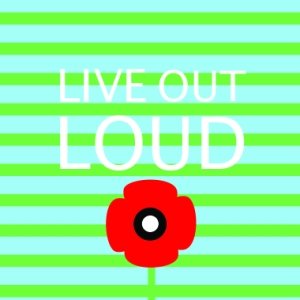Nancy Mohrbacher, IBCLC, FILCA & Kathleen Kendall-Tackett, PhD, IBCLC, FAPA look at right-brained breastfeeding and how mothers process information when they are learning the skill of breastfeeding, in this excerpt from the second edition of the very popular Breastfeeding Made Simple: Seven natural laws for nursing mothers.
In modern Western cultures, mothers have more information about breastfeeding than any time in human history. Unfortunately, most of this is information for the left side of the brain, which is fine for lots of tasks. But too much left-brained information can make you anxious about breastfeeding.
Breastfeeding is a right-brained activity. What do we mean by that? Think of left-brained instructions as head knowledge. Right-brained learning yields heart or body knowledge. To illustrate the difference, think about riding a bike. Did you learn by reading about it? Talking a class? Talking to other people about it? Or did you learn by just getting on a bike and doing it?

The right-brained dance
Mothers and babies have physiological responses that draw them to each other, that encourage them to look at each other, touch each other, and interact. Much of this behavior is guided by the right side of the brain. This is the side that has to do with affect or emotion.
A problem with the heavily left-brained, instructionally-oriented way that many mothers learn to breastfeed is that it doesn’t allow mother and baby to take advantage of their natural responses. So much breastfeeding education focuses on all the things mother must do to get the baby to breastfeed, which ignores the baby’s role. That type of instruction can be helpful to solve a particular problem, but it can be a definite drawback when one technique or strategy is applied to all mothers. It also discourages mothers and babies from using their hardwiring.
Worse still, this kind of education can encourage them to tune out their natural responses or to violate their instincts. It can be upsetting for all who are involved, sometimes creating a crisis where none existed before. Another problem with highly instructionalized left-brained approaches is that they can leave some mothers feeling incompetent because it feels as if there are 10,000 things they need to remember.
A different way to think about this is to consider how mothers throughout human history managed to breastfeed without all of the information we have now. When breastfeeding was the norm, girls learned about breastfeeding as they were growing up by seeing women actually doing it. Dr. Peter Hartmann, a well-known breastfeeding researcher, makes this point well. He asked a young Australian Aboriginal mothers, “When did you learn about breastfeeding?” She answered, “I have always known how to breastfeed.”

How exactly do you use a right-brained approach to breastfeed your baby? First, take some deep breaths and let go of those worries about doing things “wrong.” Instead of thinking of breastfeeding as a skill you need to master, or a measure of your worth as a mother, think about breastfeeding as primarily a relationship. As you spend time with your baby, you’ll be more adept at reading her cues. As you hold her, your baby will be more comfortable seeking your breast. Breastfeeding will flow naturally out of your affectionate relationship.
Based on her extensive clinical experience with mothers and babies, pediatrician and board certified lactation consultant Dr. Christina Smillie has developed some strategies that can help you help your baby. Here are some specific things you can do:
- Start with a calm, alert baby. One mistake that many women make is to wait to try breastfeeding until their babies are either sound asleep or screaming. Think about yourself. Do you learn best when you are asleep or upset? Probably not. The other reason to start with a calm baby has to do with physics. When a baby is screaming, her tongue is on the roof of her mouth. You will never get your breast in her mouth when her tongue is like that.
- Watch for early feeding cues. These cues include turning her head when someone touches her cheek and hand-to-mouth. Take note of when she starts smacking her lips or putting her hands to her mouth. This is an ideal time to try breastfeeding.
- Use your body to calm your baby. One way to calm a crying baby is by placing your baby skin to skin vertically between your breasts. Your chest is a very calming place for your baby. Try talking and making eye contact. All of these activities can get her to calm down, allowing your baby to seek the breast on her own.
- Follow your baby’s lead. When a calm, alert baby is held vertically between her mother’s breasts, often she will begin showing instinctive breast-seeking behaviors, bobbing her head and moving it from side to side. Once your baby starts these behaviors, help her in her efforts. Following your baby’s lead, support her head and shoulders. Move her rump toward your opposite breast. Encourage her explorations with your voice.
- Play while you learn to breastfeed. Play is something that is largely absent from the mothers we see. It all seems so serious and they are terrified of doing something wrong. If you are feeling frustrated, we’d like to encourage you to look at this another way. Focus on your relationship with your baby and consider breastfeeding as a part of the larger whole. Breastfeeding will flow naturally out of your affectionate relationship.
 In summary, if your baby is healthy, she is wired to know how to breastfeed. It doesn’t all depend on you getting everything right. Relax and just focus on getting to know your baby. The rest will follow.
In summary, if your baby is healthy, she is wired to know how to breastfeed. It doesn’t all depend on you getting everything right. Relax and just focus on getting to know your baby. The rest will follow.






















July 21, 2018 at 9:54 am
Excellent simple advice! Love this!
LikeLike